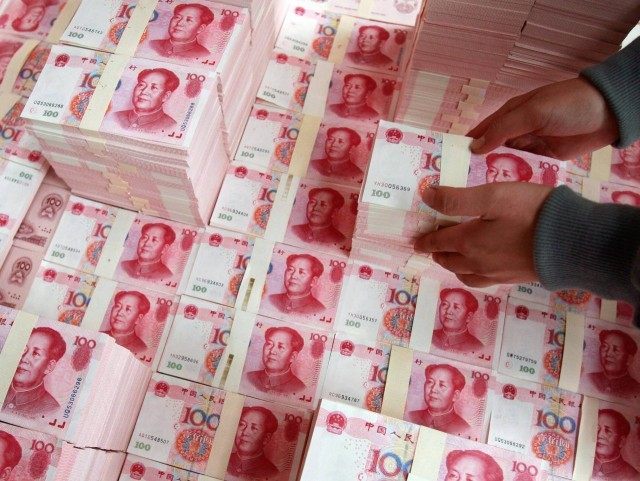With China devaluing its currency, stocks crashing 3 percent and capital flight accelerating, China has cut back its bank reserve requirements to free up $100 billion in credit.
Facing pressure from huge capital flight, the Chinese allowed their yuan currency to devalue to 6.6 yuan to the dollar on Feb. 29, causing local stock markets to crash by 3 to 5 percent — to levels not seen since late 2014.
To try to stop the rout, China’s central bank cut its deposit reserve requirement ratio by 50 basis points, to 17 percent, in an effort to free up about $100 billion in new credit for the world’s second-largest economy. The cut marks the fifth time in the last 12 months, but the first time since October 23, that China has had to reduce bank solvency to deal with financial panic, according to Stratfor Global Intelligence.
China’s new financial crisis comes just after top world finance ministers and central bank governors completed their G20 meeting in Shanghai, China. On Feb. 27 the group released a communiqué that committed the group to go beyond their own easy-money monetary policies to pursue “enhanced structural reforms” to “foster confidence and preserve and strengthen the recovery the global economy.”
“Enhanced structural reforms” are code words for central bankers demanding that governments restructure their economies to cut subsidies and curtail deficit spending.
The joint communiqué also repeated the G20 participants’ repeated pledges to not engage in competitive currency devaluations, and promised to “consult closely” on currency exchange rate markets.
The issue has become politicized after U.S. Republican presidential hopeful Donald Trump called for up to 45 percent tariffs on Chinese goods if China does not stop allowing its yuan currency to devalue.
NMI Markets reported that the latest move by The People’s Bank of China (PBOC) came just days after the central bank changed the description of its own monetary policy stance to “prudent with easing bias” from “prudent.”
PBOC officials indicated back in January that they would refrain from cutting their reserve requirements out of fear that it would send too strong an easing signal, possibly exacerbating capital outflows and putting the yuan under further downward pressure.
Louis Kuijs, chief Asia economist at Oxford Economics, commented after the move, “After some low-profile measures to keep liquidity in the interbank system high and market interest-rates low, the PBOC has now taken a relatively high-profile measure.”
The Chinese government is set to release the February manufacturing purchasing managers’ index on March 1, with analysts expecting another economic contraction. Before China’s overnight crash, analysts expect that the index will show a reading of 49.3 (50 is break-even), according to the median estimate in an NMI survey of 10 economists. That would be the lowest since August 2012’s reading of 49.2.
Breitbart News correctly predicted in August that China could suffer $1 trillion in “capital flight” in 2015. The official Chinese foreign exchange reserves have already fallen another $200 billion in 2016. While it is difficult to calculate exactly how much of that was capital flight, the scale of the bleeding of funds must strike fear in China’s bankers.

COMMENTS
Please let us know if you're having issues with commenting.